#Courtesans 19th-Century Paris
Explore tagged Tumblr posts
Text
La Traviata Tbilisi State Opera Georgia

View On WordPress
#Alfredo Germont La Traviata#Anina Violetta’s Main La Traviata#Chief Choirmaster Avtandil Chkhenkeli#Choreographer Nina Ananiashvili#Chorus Master Avtandil Chkhenkeli#Conductor Gianna Fratta#Courtesans 19th-Century Paris#Doctor Granville La Traviata#Flora Bervois La Traviata#Gastone La Traviata#Georgian National Ballet#Gianna Fratta Italian Conductor and Pianist#Giorgi Goderdzishvili Bass#Giorgio Germont La Traviata#Giuseppe Verdi Romantic Tragedy La Traviata#Irakli Mujiri Bass#Levan Makaridze Bass#Mariam Kobaliani Mezzo-Soprano#Marquis d’Aubin La Traviata#Natalia Volchenko Mezzo-Soprano#Otar Georgikia Tenor#Otar Jorjikia Tenor#Russian Architect Victor Schröter#Saginadze Baron Dufoli La Traviata#Saginadze Baron Dufoli La TrVIATA#Salome Jicia Soprano#Salome Jikia Soprano#Sulkhan Gvelesiani Baritone#Tamaz Saginadze Tenor#Tbilisi Opera and Ballet State Theater Orchestra Choir and Ballet Troupe
0 notes
Text



3 Lesbian Paintings by Henri de Toulouse-Lautrec (circa 1892-93)
"Paris. Late 19th and early 20th century. Quite a few affluent men led double lives: outwardly respectable by day, seekers of erotic titillation at brothels and café cabarets by night. Commercial wealth created by the French Empire bankrolled a sophisticated capital city, which could only be dreamed of elsewhere. But it was the women who brought this dreamworld to life... Young women earned very little money as dancers in the corps de ballet or as artist models. Hardship drove many to become sex workers and courtesans: an existence, for some, marked by destitution, substance abuse, and obscurity; for others, marked by success and acclaim. Henri de Toulouse-Lautrec (1864-1901) immortalized many of these women in extraordinary drawings and paintings. Much like the women he painted, Lautrec was always an outsider. Born into an aristocratic family, Lautrec inherited a congenital disease. After he broke both his legs as a teenager, he never properly healed, remaining a dwarf for the rest of his life. Already feeling different from those around him, he turned to the study of fine art and moved to Montmartre, the bohemian district in Paris. His highly productive life was spent largely among nightclub performers, sex workers, and hangers-on. He died at the age of thirty-six from complications of alcoholism and syphilis.... Like no other artist, his drawings openly reveal the secret life of sex workers, many of whom had intimate relationships with each another, finding some emotional comfort and stability in a profession that offered none at the time. He presents real life lesbian sex workers holding each other in bed, kissing, and embracing – in these paintings, it is clear they weren’t performing sex acts for the viewing pleasure of male clients. "
Source
#me and who#fav#lesbian#dykeposting#lesbian art#lesbian history#sapphic#wlw#henri de toulouse lautrec#lgbt history#france#1800s#1890s
455 notes
·
View notes
Text
Direct continuation of this
14th Century, The Wedding
The chapel was quiet, the flickering candlelight casting golden hues over the stone walls. Dick grinned as he clasped Dan’s hands, his voice soft but full of playful energy.
“Do you think the gods will bless us?” dick asked.
Dan raised a brow, his stoicism barely hiding a hint of a smile. “If they don’t, I’ll have a word with them myself.”
“For once, you’re not brooding,” dick laughed “I could get used to this.”
Dan smirked faintly. “You have a talent for unsettling me.”
As they exchanged vows, Dan felt something he rarely allowed himself to feel: hope.
It was short-lived.
When dick fell ill years later and succumbed to the plague, Dan begged the gods to take him too. Instead, they cursed him, forcing him to live with his grief.
---
Dan wandered through centuries, haunted by dick's absence. Time didn’t dull the ache; instead, it sharpened it, leaving him restless and yearning for the impossible.
16th-Century venise
The courtesan was beautiful, with dark hair and a sharp wit that reminded Dan of dick. He found himself drawn to her, lavishing her with gifts and stolen moments.
“You seem sad,” she said one night, tracing a finger along his jaw. “You’re always looking at me like you expect me to say something I haven’t.”
Dan forced a smile. “You remind me of someone I lost.”
She kissed him softly, but it felt hollow. No one could match the fire that dick had carried in his soul.
---
17th-Century England
The lively marketplace bustled with activity as Dan passed through, blending into the crowd. A merchant’s voice caught his attention, cutting through the noise with its cheeky charm.
“Careful, sir, you’ll scare the quills if you stare any harder.”
Dan’s gaze snapped to the stall, and his breath caught. The merchant’s auburn hair and bright smile were eerily familiar. He bought a quill just to linger, his heart aching with an unnamed longing.
“You remind me of someone,” Dan murmured.
“Lucky him,” the merchant teased.
Dan left, the stranger’s laughter echoing in his mind.
---
The Napoleonic Wars (19th Century)
The young soldier, Henri, had dick's cheeky grin and quick tongue. They met during a brutal campaign, bonding over shared hardships.
“You’re too quiet, Dan,” Henri said one night by the fire. “You’ve got stories, I can tell.”
Dan chuckled softly. “You wouldn’t believe me if I told you.”
Henri laughed and leaned closer, his gaze lingering. Dan kissed him, hoping the heat would drown out the emptiness. It didn’t. Henri was kind, but he wasn’t him.
---
19th-Century Paris
The bookshop was warm and dimly lit, a haven from the cold Parisian streets. Dan browsed aimlessly, distracted by the shopkeeper’s lively chatter with another customer.
“You’ve got a serious look about you,” the shopkeeper said, noticing Dan. “Let me guess—love lost?”
Dan stiffened. The man’s blue eyes and teasing smile felt too familiar. He handed Dan a slim volume of poetry. “This one’s good for broken hearts. I’d know.”
Dan nodded curtly, paying without a word. As he left, the shopkeeper’s parting words lingered: “Come back if you need more stories.”
It was sweet, but Dan already knew he wouldn't be coming back
---
20th Century A Bar
In a smoky speakeasy in New York, Dan nursed a drink while watching the barmaid move through the crowd. She had dick's charm and confidence, her laughter cutting through the haze of jazz and cigarette smoke.
She leaned against the bar, grinning at him. “You’ve been staring all night. Care to explain?"
“You remind me of someone,” Dan admitted, his voice low.
“Lucky her,” she teased, pouring him another drink.
Dan smiled, but it didn’t reach his eyes. He tried to convince himself that these fleeting connections were enough, but the truth gnawed at him: they weren’t.
---
20th-Century New York
The train station buzzed with energy as soldiers boarded. Dan leaned against a pillar, watching a young man in uniform charm a group of women nearby.
“Not boarding?” the soldier asked, his grin infectious.
“No,” Dan replied.
“Suit yourself.” The soldier extended a hand. “Rick.”
Dan hesitated before shaking it. “Dan.”
As the conductor called for final boarding, Rick tipped his hat. “See you around, Dan.”
Dan watched him go, the ache in his chest a reminder of something he couldn’t quite place.
Dick grayson’s life had always felt... incomplete. He couldn’t explain the strange dreams that plagued him—visions of a medieval chapel, a bustling market, a quiet bookshop. He dismissed them as nothing more than fantasies.
As Nightwing, Gotham demanded his focus. Yet, during a battle with a rogue magician, something changed.
A spell struck him mid-air, throwing him to the ground. Pain rippled through his body, but so did something else—a torrent of memories flooding his mind.
Dan, he mind whispered to him
Oh.
Oh.
Dick spent months tracking Dan down, piecing together clues from his fragmented memories and his skills as Nightwing.
He chased whispers of a man who never seemed to age, stories of someone who disappeared when connections grew too close.
In every lead, dick saw glimpses of Dan’s regret—an unfinished painting left behind in a French chateau, a carefully preserved diary in a London museum, a love letter hidden in the pages of an old book.
Each discovery hardened Dick's resolve. “You won’t run from me this time,” he muttered as he packed his gear.
Dan was sitting in his apartment, staring at the same photograph. The weight of centuries pressed down on him, his guilt and longing a constant ache.
The knock at his door startled him. He wasn’t expecting anyone. When he opened it, his breath caught.
Dick stood there, rain dripping from his hair, his eyes blazing with determination.
“How many lifetimes will it take before you see me for who I am?” dick demanded, stepping into the room without waiting for an invitation.
Dan took a step back, his mind racing. “dick?”
“Yes, Dan,” dick said, his voice firm. “It’s me. It’s always been me. And you—” his voice broke slightly, “you’ve been running from this for centuries.”
Dan sank into a chair, unable to meet dick's gaze. “I thought I was protecting you,” he whispered.
Dick crouched in front of him, gripping his hands. “You thought you were protecting yourself,” he said, his tone softer now. “But I’m here, Dan. I’ve always been here. And I remember everything,i remember you”
Dan’s eyes filled with tears. “I wanted to save you from this... from me.”
“You’re not saving me by leaving me behind,” dick said, his voice thick with emotion. “You’re breaking us both.”
The room was quiet, and Dan hesitated before reaching out, his fingers brushing against dick's cheek.
“I’m so sorry,” Dan murmured, his voice cracking.
Dick leaned into the touch, closing his eyes. “Then stop running. Stop hiding. Be with me this time. For real.”
Dan nodded, a tear slipping down his cheek. “I don’t deserve you.”
“You deserve everything,” dick said fiercely. “But you have to let yourself believe it.”
---
Months later, Dan and dick walked along the Gotham waterfront, the city alive with its usual chaos. But for the first time in centuries, Dan didn’t feel haunted.
“You’re awfully quiet,” dick said, bumping Dan’s shoulder. “Regretting your decision already?”
Dan chuckled, a rare sound that made dick grin. “Hardly. I’m just... grateful.”
Dick smirked. “Good. Because I’m not letting you off the hook this time. You owe me centuries of explanations, love letters, and... well, everything.”
Dan stopped walking, turning to face him. “You have my eternity."
Dick's grin softened, and he leaned in, pressing a kiss to Dan’s lips. For the first time, they were finally whole.
#dp x dc#dcxdp#dpxdc#dan phantom x dick grayson#dick grayson#dan fenton#bad humor ship#bad humor#first failures ship#first failures#they're my babies#i love them your honor
77 notes
·
View notes
Text
OPERA COSTUMES NOW SUIT THE ROLE, NOT THE SINGER March 11, 1984, New York Times
Back in 1875 the famous diva Celestine Galli-Marie was about to create the title role in a new opera called ''Carmen.'' In preparation for the premiere, she ordered a suitable costume - one that was supposed to combine authentic Spanish flavor with a romantic sense of the picturesque in a manner befitting a star of the Paris Opera-Comique. Thus first- nighters witnessed Bizet's spitfire emerge from her shabby cigarette factory immaculately attired in a close-fitting frock of canary satin trimmed with black silk ball fringe, a black velvet bolero, and a wide- brimmed hat with ball fringe to match. ''Gypsy chic,'' one might have called it.
Two decades later, when Emma Calvé performed the same role at the Metropolitan, wearing a seedy shawl (her own, of course), the Diamond Horseshoe gasped in disbelief: they couldn't tell Carmen apart from the chorus. Even her tenor, Jean de Reszke, was stunned. Before singing the role of Don Jose, a sergeant of the Dragoons, he had purchased a gleaming pair of boots suitable for a general. Though they weren't aware of it at the time, Calve was helping to usher in a new age.
The concept of stage costume has changed considerably since opera's palmy days. During the 19th century it didn't matter whether the stars played courtiers or courtesans, barons or beggars, so long as they were arrayed in suitable finery. Elegance and opulence were the rule, and every singer of repute owned a personal stage wardrobe from crowns to shoes.
One can only imagine, therefore, the sort of stage picture that resulted when an international cast assembled to sing, say, ''Les Huguenots,'' ''I Puritani'' or ''Der Freisch"utz'' dressed in a blinding assortment of color schemes, styles and decorations. Certainly it was closer to a fancy-dress ball than an integrated production.
''Obviously this practice is discouraged nowadays,'' says Peter Hall, the most recent head of the Metropolitan Opera costume department. ''Productions should be absolutely complete. Moreover, period is often changed by directors wishing to break with tradition, and things become rather heated when somebody comes along dressed 200 years out of date.''
To the Victorians, richness of effect was paramount, hence old-style costume decoration was very fussy, with all manner of contrasting fabrics used in combination with yards of beads, ribbons, plumes, fake gems, and embroidery, not to mention the pleats and tucks that must have been an absolute terror to clean and press.
''Things are very much simpler today than they were at the turn of the century,'' says Mr. Hall. ''While some designers, such as Zeffirelli, look at old portraits and copy those styles exactly, another school will look at authentic styles and re-interpret them somewhat. Last comes the 'self-indulgent' school that says, 'I'm not going to listen to the music anyway - I'll just do what I think is nice. Obviously that is the wrong way to go about it, for in the end the music should be reflected in the look of sets and costumes. I don't think that you can do Monteverdi in space suits. It has been done, in fact, but the result was hardly successful.''
Space suits or not, stage costume has always tended somehow to mirror its own time. Whether Nellie Melba was singing Gilda, Violetta or the Countess in ''The Marriage of Figaro,'' her ''period'' gowns - which were supposed to represent roughly the years 1470, 1850 and 1785 respectively - emphasized the hour- glass figure dictated by fashion at the fin de si ecle. Photographs of Emma Eames as Tosca show her wearing a bosomy costume that is little more than a gored Edwardian morning dress with an appropriate picture hat. Further on in time, Maria Jeritza's Tosca boasted the svelte lines popular during the 1920's and 30's.
Make-up and coiffure also have a lot to do with period feeling, but most singers have tended to wear whatever is popular or flattering. For instance, dark eyelids, kewpie-doll lips and headbands worn low over the brow usually indicate performances of the post-World War I era, whether the role depicted is Tha"is, Lakme or the "Agyptische Helena, and everyone is familiar with the all-purpose hairdo that Dame Joan Sutherland lets down only for mad scenes.
Men have been just as fashion conscious. When large, waxed moustaches were the rage, Caruso, Florencio Constantino, Mattia Battistini and many others sported them even when portraying normally clean-shaven 18th-century characters in powdered wigs.
Renaissance and earlier historical styles gave Victorian and early 20th- century designers the chance to indulge in amazing flights of fancy shackled by considerations of modesty. A copy of Harper's Weekly from 1855 contains engravings of Giulia Grisi and Marietta Alboni as the protagonists of Rossini's ''Semiramide.'' As the exotic Queen of Babylon, Grisi wore a pointed bodice, short puff sleeves, multi-layered skirt over numerous petticoats, floor-length veil and Statue-of-Liberty coronet that were merely outlandish variations on the outfit worn by Queen Victoria to the opening of the Crystal Palace in 1851.
Alboni sang Arsace, a trouser role, in a short flounced skirt worn over voluminous pantaloons tucked into dainty suede-topped boots (to give the impression of pants while hiding her legs) . With her little painted moustache - lest anyone mistake her for a woman - she looked rather like Prince Albert in drag.
Biblical and ancient garb were generally treated more like upholstery than attire on the stage prior to 1920. Old production shots of ''A"ida'' show the singers draped like ottomans in layers of heavy, embroidered fabric that would have caused real-life Egyptians to drop from heat stroke. The traditional get-up for ''Samson and Delilah'' resembled the wares of a Levantine rug merchant.
''Once again, it is the music that governs the look,'' says Mr. Hall who remembered a production of ''Samson'' 20 years ago ''for which I had not paid as much attention to the score as I might have. We designed rough, tweedy things with heavy Sumerian fringes. Then, upon hearing the priestesses' music in Act I, I realized that it calls for silk and flowing drapery.''
Nowadays, some sopranos are sufficiently alluring to make sense of more revealing attire when necessary. Gwyneth Jones, for example, sang the ''Tannh"auser'' Venus at Bayreuth clad in little more than a fishnet. It is still a rare tenor, however, who can portray Radames, Samson or Siegfried bare-chested in the appropriate heroic - or sub-tropical - manner. Indeed, Peter Hoffmann, is the only exception that comes to mind. As Siegmund in the Bayreuth centennial production of the ''Ring,'' he managed to strip to the waist before his battle with Hunding in ''Die Walk"ure'' without looking foolish.
Simplification and a greater striving for comfort and economy have had a marked effect not only on contemporary costumes themselves, but on their accessories. Although Mr. Hall personally favors ''full period costumes using fabrics as close to the original as possible,'' synthetics and substitutes can frequently be more practical and less costly. ''I like wool to be wool and silk to be silk, but obviously things are so expensive nowadays that one can't always do it. Materials that were extravagant at $25 a yard 10 years ago are now $125. It is still more economical to buy leather in skins than the imitations, however. For one thing, imitations can't be cleaned, nor can they be shaped like the real article.''
Stage jewelry and armour tend to be much lighter today than formerly. Old opera crowns used to be made of gilded metal, but the Met usually uses gold kid on a felt or elastic base. ''In Italy,'' says Mr. Hall, ''armour is still often made by property departments using brass and tin. We're inclined to use felt or vacuform (a plastic) with a metalic coating. Jewelry has also been greatly simplified. The old practice was to set false gems and pearls in brass prongs, then to sew the entire setting to the fabric. ''Now we sew on the pearls and gems directly, and apply gold braid afterward to suggest the setting.''
Robert Tuggle, archivist of the the Met, who acts as curator of the historic collection along with restoration consultant Gail Frohlinger, recently commented that, ''Even though luxurious silks and handmade laces have yielded to less opulent fabrics and trimmings, the general level of costumes is higher today than it used to be. The greater attention now being paid by designers to the chorus and smaller roles has fostered productions for which the workmanship on minor costumes is on a par with that given the stars.''
Recalling the violent upheavals that formerly took place when divas and dressmakers disagreed, Mr. Hall observed that there are relatively few donnybrooks in the Met's costume department today because singers are more serious about their work than their forebears used to be. They still have their quirks, however. ''One singer will not permit wool or velvet to cover his chest - only hard satin, because he says his voice bounces off it.'' Another once insisted that his voice was going up inside his helmet and being trapped there - although it didn't cover his face at all. ''So we made small holes on each side - like a rain hat - and he was delighted.'' Some singers avoid certain colors, either due to vanity or superstition, while others take a liking to one color or even to a particular garment. Luciano Pavarotti, it seems, belongs to the second category. ''He has a pronounced tendency to wear his favorite black suede vest in everything,'' said Mr. Hall, ''and you may quote me on that because I'm sure he knows it himself.''
Whether he does know it or not, whether it stems from superstition or from a desire for personal comfort, we can regard the tenor's habit, perhaps, as a holdover from the palmy days, a slender link with those bursting steamer trunks of the opulent past. There have been many changes in the philosophy of the dressing room over the years, but it's nice to know that some customs remain immutable.
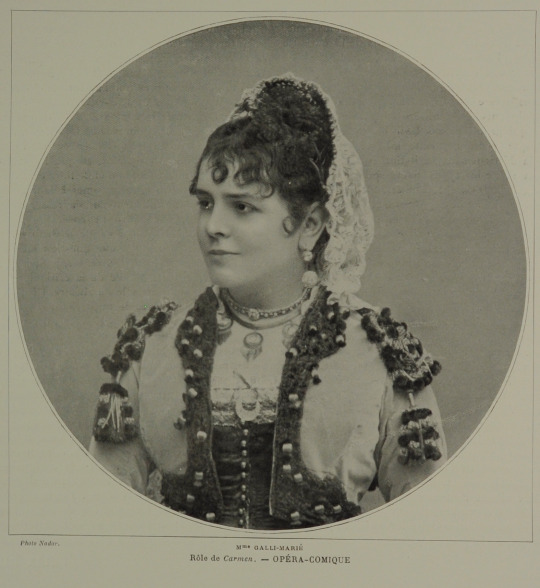
#classical music#opera#music history#bel canto#composer#classical composer#aria#classical studies#maestro#chest voice#Opera Costumes#Costumes#costume design#design#classical musician#classical musicians#classical history#history of music#historian of music#musician#musicians#diva#prima donna#Celestine Galli-Marie#Carmen#Emma Calvé#Tosca#The Metropolitan Opera#The Met#Metropolitan Opera
4 notes
·
View notes
Text
Parents Weekend! (Week 10)
As soon as I landed on Sydney as my study abroad destination, my parents began planning their trip to visit. Traveling and intercultural experiences have always been a priority for my family, so the opportunity for me to spend a semester abroad was something we were all excited about. Even more exciting was the chance to show my parents and brother around my new home - something I had been looking forward to since the day I arrived. Having just over one full weekend with them before they continued their travels, I planned to hit all my favorite spots and walks. The Friday they landed I met them at their hotel in Randwick, a nearby suburb and the location of my university, and we went straight to Thaithae which has one of the most flavorful Massamun Chicken Curries I’ve ever had. From there, we took the bus to Coogee where I showed off my hostel accommodation, Coogee Bay Road, and most importantly, Coogee Beach! Needless to say, the fam was thrilled. The shining sun and calm ocean water were like paid actors in a film, ready to play their part and impress. The jellyfish, on the other hand, were like TV extras gone rogue – they just wanted their time in the spotlight. I had never seen many jellyfish at Coogee before, but they didn’t stop us from taking a dip and soaking in the sun. After a few hours, we embarked on the coastal walk to Bondi where we planned on eating dinner. The journey, though gnarly at times, is one I would recommend to all visitors, especially as the sun starts to set and the blue sky turns into a whole palette of colors ranging from pink to yellow. I’ve walked the path countless times and each trek I feel the need to take more pictures that never quite capture the beauty. After dinner, we made our way to Bondi beach where we treated ourselves to Anita Gelato, the best gelato in town (or, at least, the gelato with the longest line in town)! Don’t get me wrong, I’m a loyal customer to Gelato Messina (an Australian classic), but something about Anita’s just never disappoints.

^^ Just another picture of the Coogee-Bondi walk!
Saturday was just as packed. We woke up early and made our way into the city where we had an opera show booked in none other than the Sydney Opera House!! This was my first time getting up close to Sydney’s most renowned landmark, so I was very excited to share the moment with my family. This was also my first time watching an opera! I’m not exactly sure what I was expecting, but I was sorely disappointed by the lack of monocles in the audience. That said, I was incredibly impressed with the production of La Traviata, a dramatic love story set in 19th century Paris in which a dying courtesan, Violetta, finds true love with a young nobleman and they flee to the countryside together only to be forced apart by the man’s father. Upon reconnection, she passed away. Though in a different language, the singing and performing was one-of-a-kind and the screens with a rolling translation to English made the show very accessible. I was also enamored by the view of the city and water from inside the Opera house despite the architecture being slightly less impressive on the inside compared to the beautiful exterior.

^^ Pic with my Dad and brother!

^^ Pic with mom and brother!
The rest of the day was filled with a quick visit to the Museum of Sydney and a long walk through the city. Even without a concrete plan, I love walking around the city and finding my own little detours, foods to try, and adventures to embark on. We made our way down Pitt street and ended up in the bustling Chinatown full of restaurants and desserts.
On our last full day together, I was adamant that we take the ferry to Manly where we could chill on the beach all day and explore a different part of Sydney. I also just love the ferry ride which takes you down the Sydney Harbor and showcases all the coastal neighborhoods atop hills and cliffs along the water. In Manly, we walked over to Shelly beach which is actually known to be one of the best snorkeling spots in Sydney, but we sought it out for the calmer water. Catching the sunset ferry back proved harder to time than expected, but we came pretty darn close!

^^ Sydney Harbor during sunset as seen from the ferry.
Before their flight to Melbourne, my parents and I walked around the University of New South Wales campus in Randwick and then we went up to Paddington to see the Art and Design campus where I have my photography class. We also visited the Sydney Jewish Museum in Paddington which was very educational regarding the culture and history of Judaism in Sydney. We were pleasantly surprised to learn that the museum constantly hosts students on class field trips as we were met with hundreds of students on tours making their way through the exhibits. I highly recommend this museum to anyone in the area!
Showing my family around my favorite and most frequented spots in Sydney was extremely rewarding and made me so happy throughout the weekend. I would never have made it out here without my parents’ support and I am extremely grateful for everything they have done to get me to Sydney and ensure I enjoy my time here. Thank you, Mom and Dad!
David Bayer
Biomedical Engineering
University of New South Wales in Sydney, Australia
2 notes
·
View notes
Note
After reading Diana Biller and Adriana Herrera’s, I’m loving with later-19th century historicals on The Continent. Do you have any other favorites in this same vein?
Those two are suuuuch good writers. Unfortunately, I don't have many of these because historicals tend to revolve around England, save for those American outliers :/.
A decent portion of The Madness of Lord Ian Mackenzie by Jennifer Ashley takes place in Paris--I'm pretty sure that this is where Beth sucks Ian's dick in a carriage. We love to see it.
The Courtesan Duchess by Joanna Shupe partially takes place in Venice, I believe--it's where she's pretending to be a courtesan to seduce her husband.
If you're open to another timeframe (medieval) For My Lady's Heart and Shadowheart by Laura Kinsale take place in--or really, Italian states as Italy didn't exist back then but I digress.
2 notes
·
View notes
Photo
MOULIN ROUGE! dir. Baz Luhrmann | 2001
Was Moulin Rouge filmed in Paris?
It is this end of the 19th century that Baz Luhrmann recreates in his film Moulin Rouge. Most of the film was shot in the studio, in Australia. But to write the script, the film maker carried out a lot of documentary research and immersed himself in the atmosphere of Montmartre.
Moulin Rouge! is a 2001 jukebox musicalromantic drama film directed, produced, and co-written by Baz Luhrmann. It follows an English poet, Christian, who falls in love with the star of the Moulin Rouge, cabaret actress and courtesan, Satine.
Starring
Nicole Kidman
Ewan McGregor
John Leguizamo
Jim Broadbent
Richard Roxburgh
Moulin Rouge! - Wikipedia
Moulin Rouge!
The most famous cabaret in the world!
The Moulin Rouge was immortalized by Toulouse-Lautrec and was the cradle of the music hall with the famous Mistinguett. Since it opened in 1889, it has dazzled the whole world. Edith Piaf, Liza Minnelli, Frank Sinatra and Elton John … numerous French and international personalities have over the years become enamoured of this legendary cabaret!

The room is magnificently decorated in belle époque style and red velvet, with typical burlesque frescoes. A wonderful place to enjoy gourmet French food by by the Chef David le Quellec, served with champagne - the official drink of the cabaret. All your senses are awakened as you enjoy your food and watch the show!

Admire a troupe of 60 artists from all over the world who perform twice each evening in the revue 'Féerie', a show made up of four breathtaking acts: feathers, rhinestones, sequins, sparkling decor, acrobats, original music, international attractions ... not forgetting the famous fast-paced French Cancan.

An iconic place, flamboyant colour, talented artists, renowned craftsmen, a high-quality team, original stage productions ... The Moulin Rouge is all that, and more!

Come and spend an evening at the Moulin Rouge - with family, friends ... or lovers - and discover the show "Féerie". Being dazzled by the artists is synonymous with an “enchanted interlude" ... in brief; a magical and unforgettable moment! Correct clothing required. Jacket and tie appreciated. Shorts, bermudas, sports clothes and shoes, flip-flops are not allowed.
Moulin Rouge • Paris je t'aime - Tourist office (parisjetaime.com)
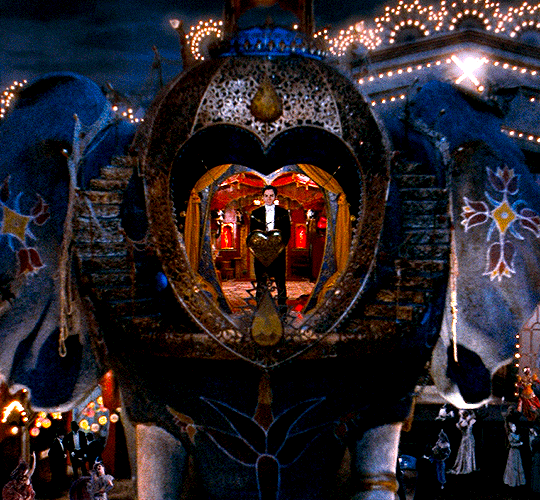


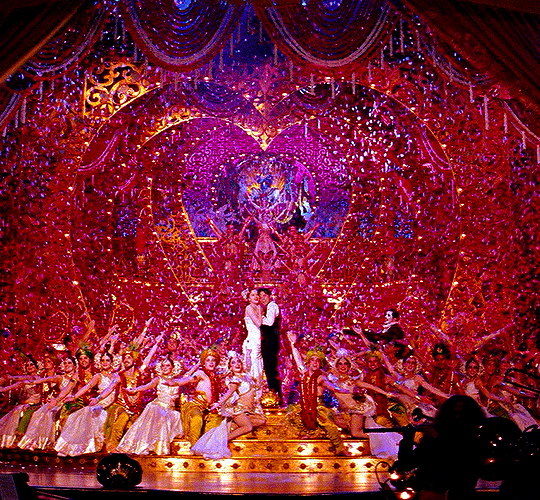
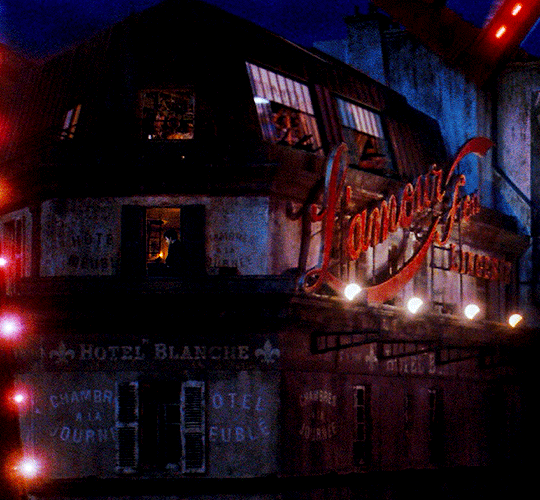
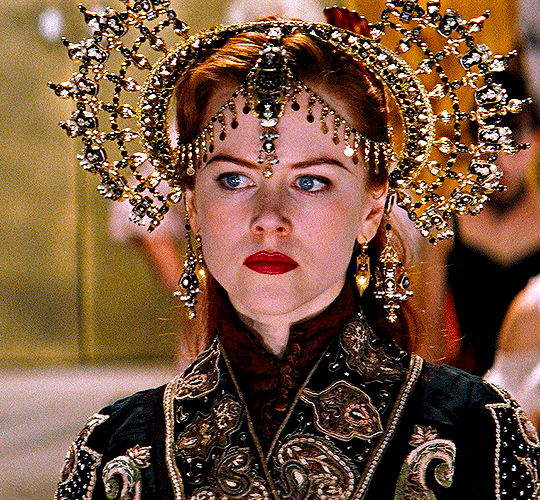
MOULIN ROUGE! dir. Baz Luhrmann | 2001
3K notes
·
View notes
Text
SARAH BERNHARDT // ACTRESS
“She was the greatest French actress of the late 19th century and still one of the best-known figures in the history of theatre. She is known as ‘The Divine Sarah’. The illegitimate daughter of a Dutch courtesan and unknown father who rose to unrivalled international fame. Her voice was said to be remarkable in its beauty. She appeared throughout Europe, the US and Canada. She played several 'trouser' parts, including Hamlet in Paris and London in 1899. In 1915 her right leg was amputated following a stage accident. She continued on visiting soldiers at the front during the First World War, carried in a chair.”


0 notes
Video
youtube
The Best Kept Courtesan in 19th Century Paris
0 notes
Text
Maisons close
Transports you to the clandestine world of 19th-century Parisian brothels, where secrets, desires, and power collide. Set against the backdrop of exquisite period detail, this riveting drama delves into the lives of the women who inhabit these forbidden spaces. From the enigmatic Madame to the captivating courtesans, each character navigates a complex web of ambition, survival, and passion. With its rich storytelling and compelling characters, "Maisons Close" offers a provocative exploration of societal norms and human nature, inviting viewers to peer behind the velvet curtains of Paris' most notorious establishments.
0 notes
Text

˗ˏˋ The Courtesan — 1887 ´ˎ˗
During his stay in Paris, Van Gogh encountered various artistic styles, including Japanese ukiyo-e woodblock prints. These prints did not become available in the West until the mid-19th century. Van Gogh collected the works of Japanese ukiyo-e masters such as Hiroshige and Hokusai, and argued that these works were as important as those of European artists such as Rubens and Rembrandt. Fan He Van Gogh took inspiration to create this particular painting from a reproduction of an engraving by Eisen Keisai, published in May 1886 on the cover of Illustre magazine in Paris.
Source: https://www.theartstory.org/artist/van-gogh-vincent/
1 note
·
View note
Text
some articles I'm skimming to revisit
https://brill.com/display/book/9789004346253/BP000009.xml?language=en
https://www.jstor.org/stable/26851834
https://www.artsy.net/article/artsy-editorial-sordid-truth-degass-ballet-dancers
And my favorite book that I would like to read through entirely: Ballerina: Sex, Scandal, and Suffering Behind the Symbol of Perfection, by Deirdre Kelley
So far, my impression of ballet historians is that they are all idiots who don't contextualize the fact that just because ballet is old fashioned to THEM does not mean that women in outfits that hugged the skin, dancing with movements that kicked up the legs, might have been a little sexually provocative in an era where skirts above the ankle were scandalous.
Related, thank you to this author: https://jane-davis.co.uk/2014/04/06/the-seduction-of-ballet-jane-davis-on-one-of-the-themes-of-an-unchoreographed-life/
4 notes
·
View notes
Text
so i got this discount on a crate of fancy wines and one of them is a sparkling rose and let me tell you -- sitting here with the bottle, sipping it out of a champagne glass has me feeling like the classiest bitch on the planet.
#the world is very bad. sometimes it's the little things y'all#i. 「 ooc. 」#i feel like an expensive consumptive courtesan from 19th century paris
3 notes
·
View notes
Text
How the Courtesans Lived: A Belle Epoque Time Capsule
How the Courtesans Lived: A Belle Epoque Time Capsule

A Belle Epoque courtesan of the first magnitude, Marthe Florian (1864-1939) has been well forgotten since her “sentimental retirement”. But the reopening of her apartment, seven decades after her death, reminded her to our good memory by the brilliance of her treasures.
Monsieur Olivier Choppin Janvry is not close to forgetting the spring day of 2010 when he was mandated by a provincial…
View On WordPress
2 notes
·
View notes
Photo


Lucy Worsley's Nights at the Opera
Scratches made by 19th Century courtesans on mirrors in Lapérouse Restaurant, Paris.
#Lucy Worsley#Lucy Worsley's Nights at the Opera#courtesans#diamonds#Lapérouse restaurant Paris#19th century France#Opera
298 notes
·
View notes
Text
Château de la Motte Husson




Château de la Motte Husson is located in the town of Martigne-sur-Mayenne, France. It was built upon a Viking stronghold in the Motte-and-Bailey style and rebuilt in an enclosure of a square moat in 1600. The castle was altered in the 18th and 19th centuries to the Renaissance-style. The chateau underwent many changes throughout its history. Much of the new building was completed in 1821 by the Deschamps family, who turned the castle into a five-story summer home with 45 rooms. When he passed, the castle was purchased by Pere Noel, who owned brothels in Paris and the local area. To give the courtesans a vacation, he opened the castle for their use, but it also served as a headquarters for the French Resistance. During the Resistance, the castle held a cache of arms. In 2014, the Strawbridge family purchased the castle and renovated the home, adding electricity and heating. They opened it for weddings and events. The castle’s transformation can be seen in the Escape to the Chateau series. Château de la Motte Husson sits on 12 acres of land with a moat, a walled garden, a private forest, and seven outbuildings, including an orangery.
#château de la motte husson#CASTLES#chateaux#france#loire region#Martin sur mayenne#wedding venue#events#glamping
12 notes
·
View notes